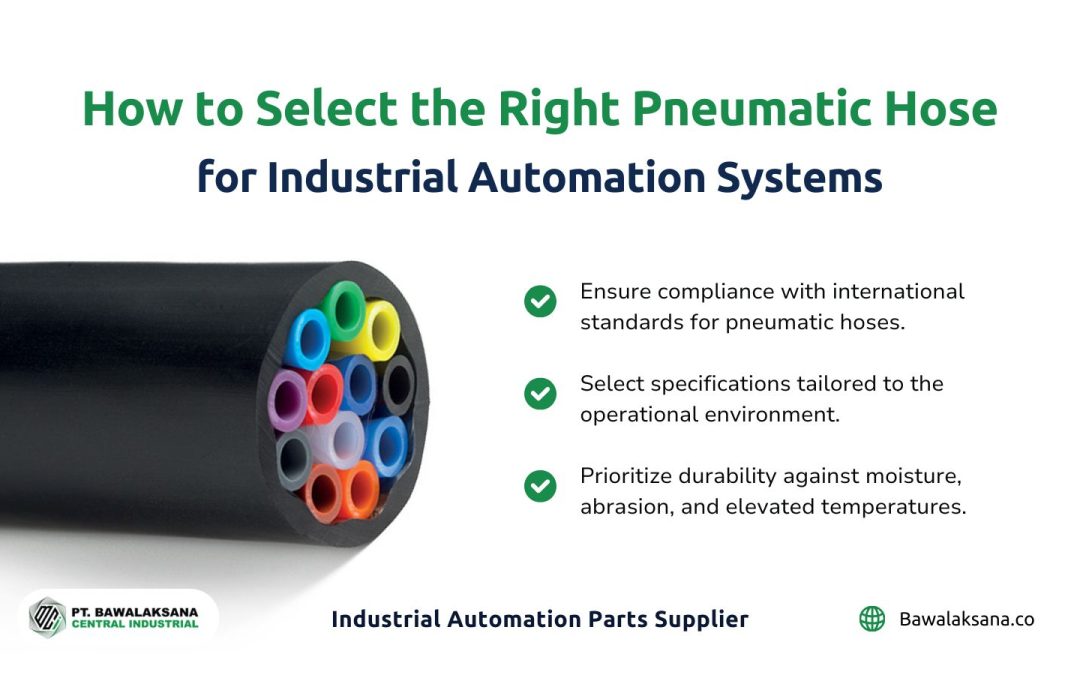Pneumatic system is one of the technologies that are widely utilized in various industrial sectors. By utilizing compressed air as a source of driving force, this system is able to produce efficient and reliable performance.
One of the main components that play an important role in pneumatic systems is the pneumatic valve.
In this article, the Bawalaksana.id team will discuss the types of pneumatic valves and their working principles.
Understand the Concept of Pneumatic Valve
Before exploring further, let’s first understand what a pneumatic valve is.
Pneumatic valve is a device that functions to regulate the flow of pressurized air in a pneumatic system. This valve can change the direction of air flow, open or close the flow path, and control air pressure and flow rate.
With its ability to control air flow, pneumatic valves play a central role in operating various other pneumatic components, such as pneumatic cylinders, air tools and others.
Pneumatic Valve Classification
Pneumatic valves can be classified based on several criteria, including:
1. Based on Number of Flow Paths (Ports)
Pneumatic valves can be divided into several types based on the number of flow paths (ports) they have, namely:
a. Two-way Valve
This type of pneumatic valve has two flow paths, namely one input path and one output path. This valve functions to open or close the air flow on / off.
b. Three-way Valve
This type of valve has three flow paths, namely one input path, one output path, and one exhaust path. Three-way valves are used to control air flow in pneumatic cylinders that work in one direction (single-acting cylinder).
c. Four-way Valve
A four-path pneumatic valve has four flow paths, namely one input path, two output paths, and one discharge path. Four-way valves are used to control air flow in pneumatic cylinders that work in two directions (double-acting cylinder).
2. By Number of Valve Positions
Pneumatic valves can also be classified by the number of valve positions they have, such as:
a. Two-position Pneumatic Valve
This type of valve only has two valve positions, namely the open position and the closed position.
b. Three-position Pneumatic Valve
This type of valve has three valve positions, namely open position, closed position, and center position. The center position is used to lock the position (piston) of the actuator.

3. By Actuator Type
Pneumatic valves can also be classified by the type of actuator used to drive the valve, such as:
a. Solenoid Valve
Solenoid valve is a type of pneumatic valve that is operated using electrical signals. When an electric current is applied to the solenoid coil, a magnetic field is formed which moves the valve.
b. Air-Operated Valve
Air-operated valve is a type of pneumatic valve that is operated using compressed air. Compressed air will move the piston or diaphragm connected to the valve.
c. Mechanical Valve
Mechanical valve is a type of pneumatic valve that is operated manually using mechanical power, such as levers, pedals, or rotary wheels.
4. Based on Special Functions
In addition to the above classification, there are also several types of pneumatic valves that have special functions, such as:
a. Check Valve (Non-return Valve)
Check valve is a type of pneumatic valve that only allows air flow in one direction. This valve serves to prevent backflow in pneumatic systems.
b. Flow Control Valve
Flow control valve is a type of pneumatic valve that functions to control the air flow rate in a pneumatic system.
c. Pressure Control Valve
Pressure control valve is a type of pneumatic valve that functions to control air pressure in a pneumatic system, such as limiting the maximum pressure, regulating the pressure sequence, or lowering the pressure.
| Also Read: Pneumatic System Components to Know |

Working Principle of Pneumatic Valve
Although there are various types of pneumatic valves, in general the working principle is the same, namely changing the cross-sectional area of the air flow channel to regulate the direction and rate of flow. This change in channel cross-section can be done on/off (discontinuous) or continuously (continuous).
There are two main types of pneumatic valve designs based on their working principle, namely:
1. Piston Valve
Piston valves are designed to control air flow on/off. This type of valve has a piston that moves along the flow axis to open or close the flow channel. Piston valves are suitable for simple systems with specific functions.
2. Spool Valve
Spool valves are designed to control airflow in a more complex manner. This type of valve has a spool (cylindrical rod) that moves across the axis of flow. By shifting the position of the spool, the valve can adjust the direction and rate of air flow more flexibly. Spool valves are suitable for complex systems with multiple flow paths.
As additional information, that the operation of pneumatic valves in the industry, this device can be driven by a solenoid, piston, or diaphragm. All of these parts will drive the internal valve component (piston or spool) to regulate air flow according to system needs.

The Important Role of Pneumatic Valve in Pneumatic System
Pneumatic valves play a very important role in pneumatic systems, among others:
- Controlling the Direction of Air Flow: Pneumatic valves function to regulate the direction of air flow in a pneumatic system, such as flowing air to a pneumatic cylinder to move a piston or flowing air to a pneumatic motor to move a rotor.
- Controlling Air Flow Rate: With its ability to adjust the cross-sectional area of the flow channel, a pneumatic valve can control the air flow rate in a pneumatic system. This allows adjusting the speed of motion of pneumatic components according to the needs.
- Controlling Air Pressure: Several types of pneumatic valves, such as pressure control valves, can be used to control air pressure in pneumatic systems. This is important to ensure the safety and operational efficiency of the system.
- Preventing Backflow Pneumatic valve types such as check valves function to prevent backflow in pneumatic systems. This is important to ensure the system works correctly and prevent damage to components.
- Locking or Holding the Stroke Position of the Actuator: Pneumatic valves with a center position can be used to lock or hold pneumatic actuators, such as cylinders or pneumatic motors.
Pneumatic Valve Applications in Industry
Pneumatic valves are used in various industrial sectors, including:
- Automotive Industry: Pneumatic valves are used in brake systems, exhaust systems, and air control systems in motor vehicles.
- Manufacturing Industry: Pneumatic valves are used in production machinery to control the flow of raw materials, coolants, and lubricants.
- Pharmaceutical Industry: Pneumatic valves are used in the pharmaceutical production process to control the flow of chemicals and liquids.
- Food and Beverage Industry: Pneumatic valves are used in food and beverage processing systems to control the flow of raw materials, cleaning fluids, and compressed air.
- Packaging Industry: Pneumatic valves are used in packaging machinery to control the flow of air used to fill packaging or drive machine components.
- Mining Industry: Pneumatic valves are used in mining equipment to control the flow of air used to drive actuators or clean work areas.
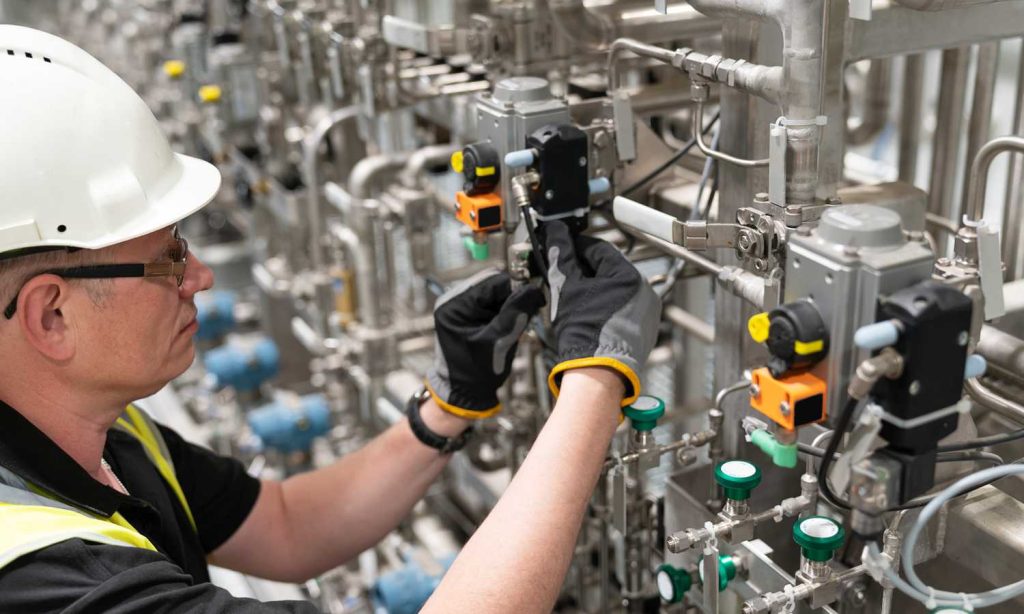
Pneumatic Valve Maintenance and Care
To ensure optimal performance and long service life, pneumatic valves require proper maintenance and care. Here are some tips for pneumatic valve maintenance:
- Periodic Cleaning: Clean the pneumatic valve regularly to avoid the accumulation of dust and dirt that can interfere with its performance.
- Maintain Air Quality: Ensure that the air used in the pneumatic system is free from contaminants, such as solid particles, water, or oil. Use air filters and air dryers that comply with industry standards.
- Checking for Leaks: Periodically check for possible leaks in the pneumatic valve, especially at connections and internal valve components.
- Lubricate Moving Components: Lubricate the moving components of the pneumatic valve, such as the piston or spool, according to the manufacturer’s recommendations.
- Replace Worn or Damaged Components: Replace worn or damaged pneumatic valve components with new ones according to the manufacturer’s recommendations.
- Following the Best Maintenance Procedures: Follow the maintenance procedures recommended by the pneumatic valve manufacturer to ensure optimal performance and long service life.
This is a comprehensive discussion about pneumatic valves from the Bawalaksana.id team .
It is undeniable that pneumatic valves are very important components in pneumatic systems in various sectors. By understanding the types of pneumatic valves and their working principles, you can choose the right valve according to the needs of your industrial application.
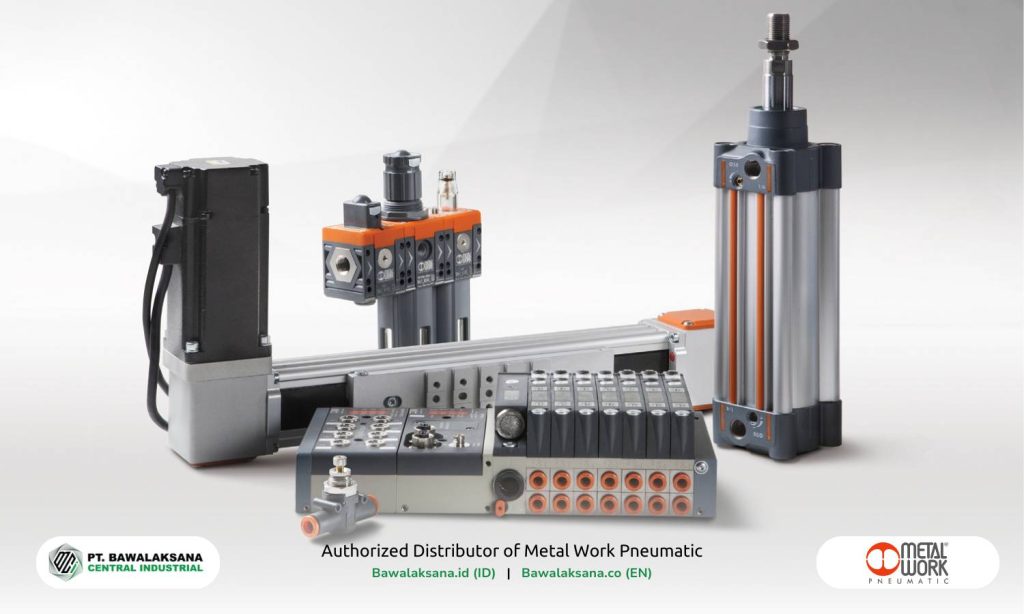
PT. Bawalaksana Central Industrial is your best partner for Automation Solution and System Integration. We can provide complete solutions for various industrial automation needs including supplying specialized pneumatic valves and complete pneumatic system integration.
We are the authorized distributor for Metal Work Pneumatic which can provide complete solutions for pneumatic system components and technologies that can be connected to Industrial of Things (IoT) systems. We can provide support for your company from planning, implementation to maintenance.
We have also become an authorized Distributor for Mebra Plastik Italia, the best vendor for industrial grade pneumatic hoses, as well as an Authorized System Integrator and Solution Partner for Phoenix Contact.
If you are looking for the best pneumatic valve products or planning to implement an all-in pneumatic system, please contact our Application Engineer team now.
Click the Contact Us button below to get complete information and the best offer.

Romanta Pinrih Linuwih
Pneumatic Automation Systems Expert
This article was written in collaboration with Romanta Pinrih Linuwih, an expert in Pneumatic Automation Systems, to ensure accuracy and high quality insights.



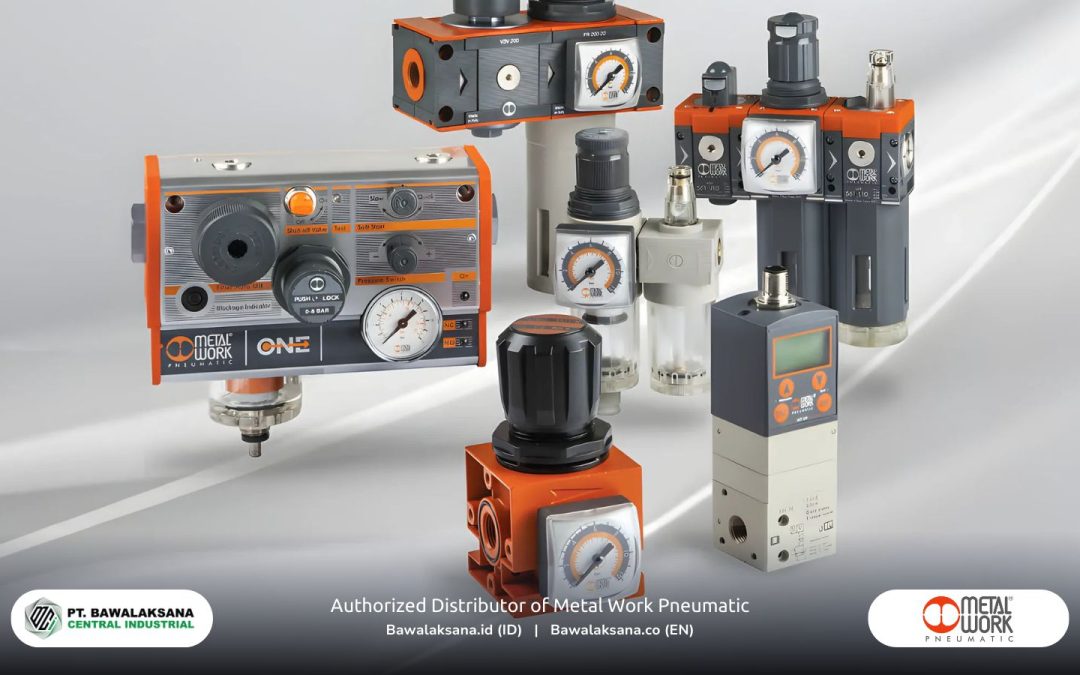

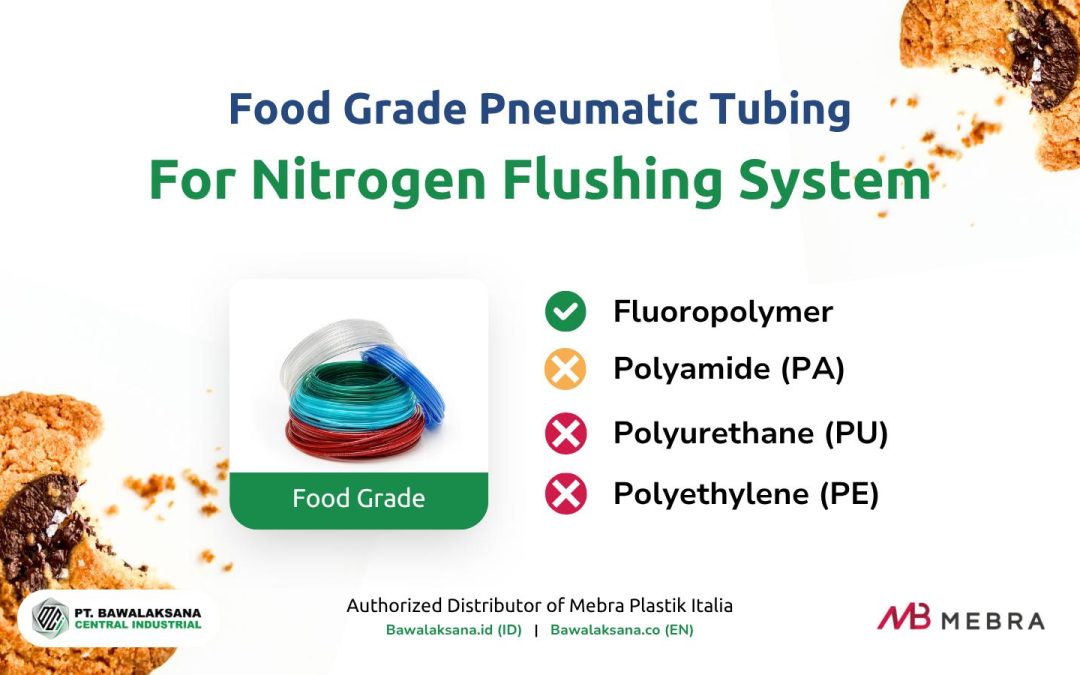
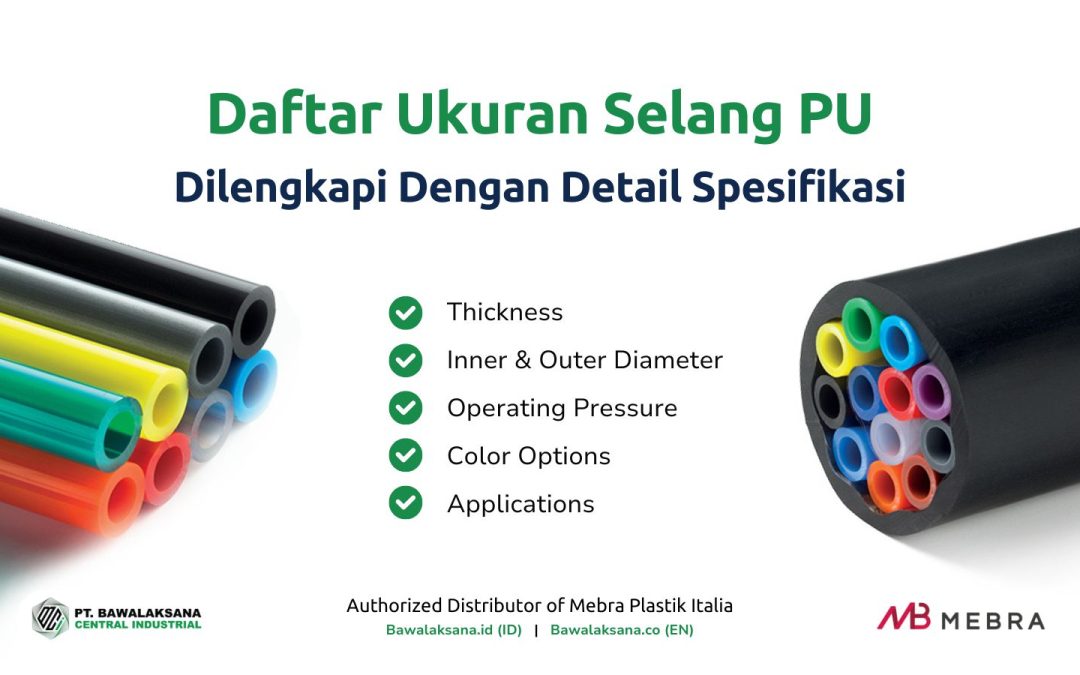

![10+ Examples of Pneumatic Tools in Daily Life and Industry [2025]](https://bawalaksana.co/wp-content/uploads/2025/05/Sandblasting-large-diameter-pipes-to-remove-surface-contaminants-1080x675.jpg)
